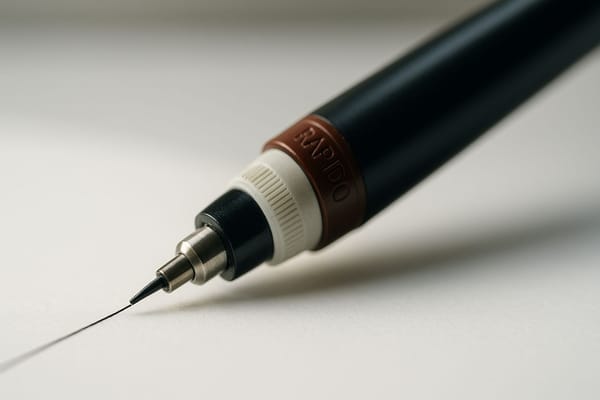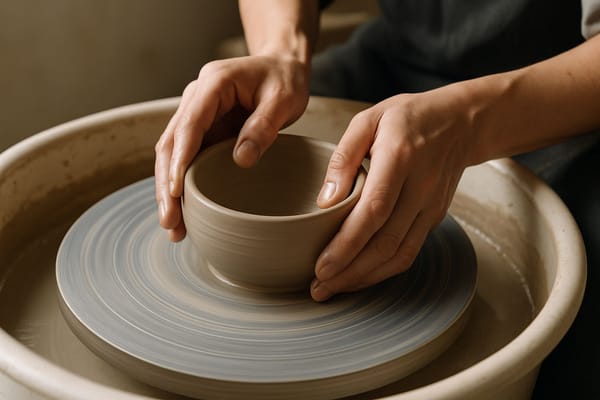Linen Canvas 101: Everything You Need to Know Before Buying
Thinking of upgrading to linen canvas? Discover its pros, cons, and buying tips so you can select the best surface for your style and medium.

When you first step into the world of painting, you might notice that people throw around the term “linen canvas” like it’s the gold standard. But what is it, and why should you care? Whether you’re a beginner or already exploring different surfaces, it helps to understand what linen canvas is all about. This post will walk you through every important detail in a relaxed, friendly way. You’ll feel right at home learning about linen’s key features, how it compares to other options, and why many serious painters can’t get enough of it.
What Is Linen Canvas?
Linen canvas is a fabric surface used for painting made from the fibres of the flax plant. This material has earned a reputation for being sturdy, long-lasting, and reliable. If you’ve ever touched a piece of high-quality linen clothing or home décor, you might have noticed its smooth yet textured feel. That same quality translates to painting surfaces. Artists around the globe favour linen canvas for its durability and unique weave.
When you place linen next to other fabrics, you’ll notice it seems more substantial. Its threads are thicker and less likely to warp under pressure. Over time, this helps your artwork remain stable. It’s similar to choosing a well-constructed shoe over a flimsy one—both might look okay at the start, but the sturdier product stands up better for everyday use.
How Linen Is Made?
Understanding how linen comes to life can help you appreciate its price and properties. The process begins with the flax plant, which is harvested when it’s mature. The fibres of the plant get separated, combed, and then spun into threads. Finally, these threads are woven into linen fabric.
This production method can be time-consuming. Flax plants don’t always grow in every climate, which is why linen might cost more in certain parts of the world. However, the payoff is a fabric that feels strong, has a natural lustre, and holds paint well.
Linen vs. Cotton: Quick Overview
If you’ve heard of “cotton canvas,” you might be wondering how linen stands apart. Here’s a simple table to help you compare the two:
Feature | Linen Canvas | Cotton Canvas |
|---|---|---|
Material | Made from flax fibres | Made from cotton plant fibres |
Durability | Extremely high, less prone to warping | Good, but it can loosen over time |
Texture | Natural weave with subtle irregularities | Generally smoother, sometimes springy |
Cost | Usually more expensive | Often more budget-friendly |
Ideal For | Professional work, long-term projects | Beginners, practice sessions, quick art |
In short, cotton canvas is a decent option for everyday painting, while linen often appeals to artists who want a fabric that holds up for years and gives a premium feel.
Why Linen Is Considered Premium?
Strength and Durability
Linen is known for its resilience. Once stretched on a frame, it’s less likely to sag or develop wobbly spots. If you plan to hang your artwork in varying conditions—like a humid environment—linen might resist that moisture better than some other surfaces. This stability also gives you peace of mind if you’re investing lots of time into a piece you’d like to keep for decades.
Texture That Makes a Difference
Linen’s weave has a unique charm. It’s not always uniform, and those tiny variations bring life to your painting. Oil painters, in particular, often rave about how well linen accepts thick paint layers. If you’re someone who works in multiple layers or loves a mix of brush and palette knife techniques, linen can handle that gracefully.
Longevity
You might have heard stories of centuries-old paintings on linen that still look vibrant. Much of that comes down to how linen fibres hold together over time. If you treat it well, a linen canvas can support your art for many years. That’s a huge draw for artists planning to sell or display their work in galleries.
Factors to Look For When Buying Linen Canvas
With so many brands out there, it’s easy to feel a bit lost. Here are some things to keep in mind:
Thread Count
Select for a thread count that matches your painting style. A tighter weave may offer a smoother surface, but a looser weave can offer a firmer texture.
Weight
Linen canvas is often labelled in ounces (oz). Heavier linen (like 10 oz or 12 oz) is thicker and can handle heavy paint without bending or sagging. Lighter weights (like 7 oz) are still good, but applying very thick layers requires more care.

Primed vs. Unprimed
You can buy linen, either primed or unprimed. Primed means it already has a layer of gesso or similar material. Unprimed requires you to apply your sizing medium and gesso before painting. Some artists prefer to control these steps themselves, while others like the convenience of a pre-primed canvas.
Brand Reputation
Certain brands have been around for a long time and consistently produce high-quality linen. Reading reviews and asking fellow artists can guide you toward a reliable product.
Budget
Linen can indeed be pricey. Think about how many pieces you plan to paint. If you’re working on a significant project or you aim to sell your artwork, it might be worth spending more. If you’re just experimenting, you might opt for a smaller linen canvas or wait for sales.
Cost vs. Value
When it comes to linen, cost can be a sticking point. A single linen canvas might cost several times more than a cotton one of the same size. Is it really worth that difference in price? It depends on your priorities. Here’s a brief table to highlight what you get for your money:
Expense Level | Possible Benefits |
|---|---|
Budget or “Student” Linen Canvas | Decent strength, some texture variation, moderate lifespan |
Mid-Range Linen Canvas | Better weave, improved prep, smoother painting experience |
High-End or Premium Linen Canvas | Top-notch durability, consistent texture, likely to last decades |
If you’re only painting as a fun hobby, it might not make sense to drop a lot of money on the priciest linen you can find. But if you’re building a portfolio or selling your work, the quality could be a significant selling point. Collectors and galleries might recognise that you’re committed to using strong, time-tested materials.
Check out the exclusive linen canvas collection from Blick Art Materials
How to Prepare Your Linen Canvas?
1. Sizing
Linen fibres are natural, which means oil paint can eventually harm them if there’s no protective layer in between. To help with this, many artists use a sizing medium (like rabbit skin glue or an acrylic polymer) before applying gesso. This step guards the fabric from direct contact with oil-based products.
2. Gesso Application
Gesso is a primer that goes on top of the sizing layer. It creates a paint-friendly surface, giving your colours a good base to cling to. Most people apply two or three thin coats of gesso. Afterwards, you can sand lightly if you want a smoother finish.
3. Drying Time
Some people rush straight into painting right after applying gesso. It’s often better to let it rest for at least a day. This waiting period helps the layers settle, which might reduce issues like cracking or peeling later on.
Storing and Maintaining Linen Canvases
Once you’ve got your linen canvas all set, how do you keep it in tip-top shape? Here are a few tips:
- Store Upright: Lean your finished canvases against a wall or place them on a sturdy shelf. Stacking them flat on top of each other can create pressure spots.
- Avoid Extreme Conditions: Linen can handle moderate changes in temperature or humidity, but it’s still best to keep it away from very damp or very hot environments.

- Handle with Clean Hands: If you move an unprimed or partially finished linen canvas, try to use clean hands. Dirt or oils can transfer to the fibres.
- Regular Checks: If your painting has been stored for a while, periodically inspect it for signs of mould, sagging, or changes in tension.
Treat your linen canvas with respect, and it’ll stay strong for years, holding onto your artwork without much fuss.
Frequently Asked Questions
Is linen only for oil painting?
Not at all. Linen works nicely with acrylic paints, and some watercolour artists even stretch linen canvases if they apply the right ground. The main appeal for oil painters is the fabric’s protective properties, but acrylic painters can also benefit from the stable surface.
Do I really need to size the canvas first?
If you plan to paint with oils, it’s a smart move. Acrylic paints are less invasive, but many artists still prefer to protect the fabric. Think of it as putting a protective barrier on a valuable item before using it every day.
Can I reuse linen canvas?
If the painting didn’t work out, some folks sand or scrape off the existing paint layer and then re-prime. The success of this depends on how thick the original paint was. If you used heavy impasto, reusing might be challenging. However, a lightly painted surface can sometimes be reclaimed with some elbow grease and fresh gesso.
Is it possible to buy linen in rolls?
Yes, and this is how many professional artists work. They buy large rolls of linen fabric and stretch them on canvases.
Where can I Buy Linen Canvas Online?
Choosing linen canvas can change how you approach painting, and Blick Art Materials provides an easy way to try it out. You may discover that the surface’s sturdiness improves your brush control or that the weave adds a unique flair to your finished piece. If you like it, you might never go back to other canvas types.
Or maybe you’ll keep linen for special projects while using more affordable surfaces for practice. Whatever your preference, browsing the linen selection at Blick can help you find exactly what you need. It’s a convenient place of options, advice, and even artist-friendly deals.
Conclusion
Linen canvas holds a special place in the hearts of painters who crave a durable, high-quality surface. If you’re just starting out, you'll find cotton easier on the budget. But if you’ve experimented for a while and you’re eager to step up your game—or you’re creating art for sale, linen might be the next logical move. Buying a small linen canvas to try can help you see if the difference in feel justifies the price. You may fall in love with the way your brush glides across the surface or the fact that your paintings stay vibrant and intact for years.
So go ahead: consider making your next piece of linen. You may just discover a favourite surface that adds depth and stability to your art practice. And if you do, be sure to enjoy every step of the process, from unrolling that fresh piece of flax-woven fabric to applying the final brushstroke on your masterpiece. Happy painting!




